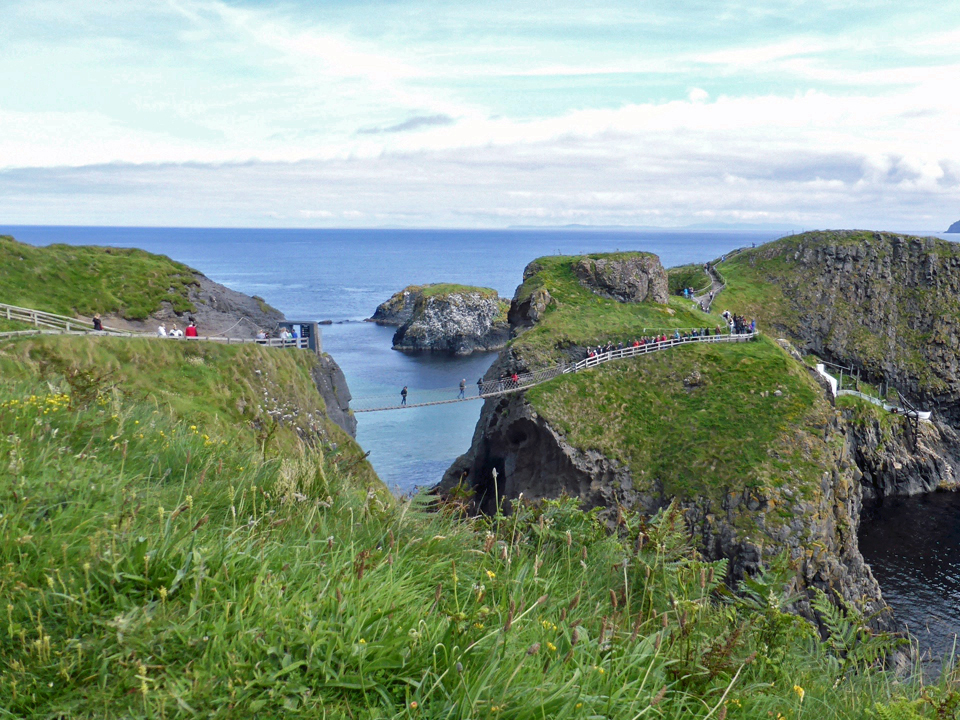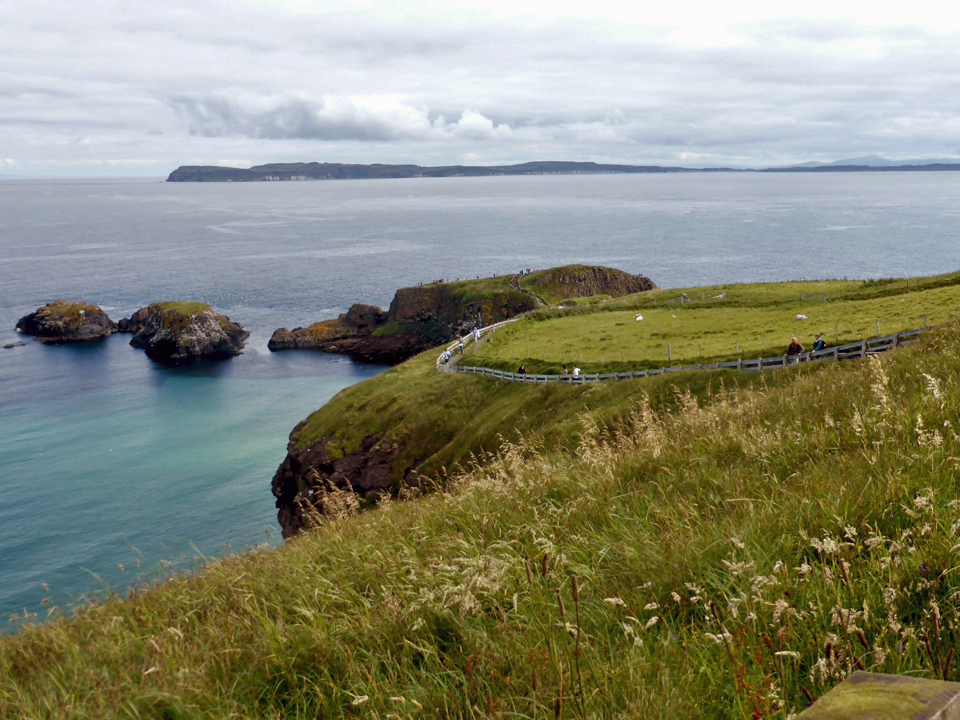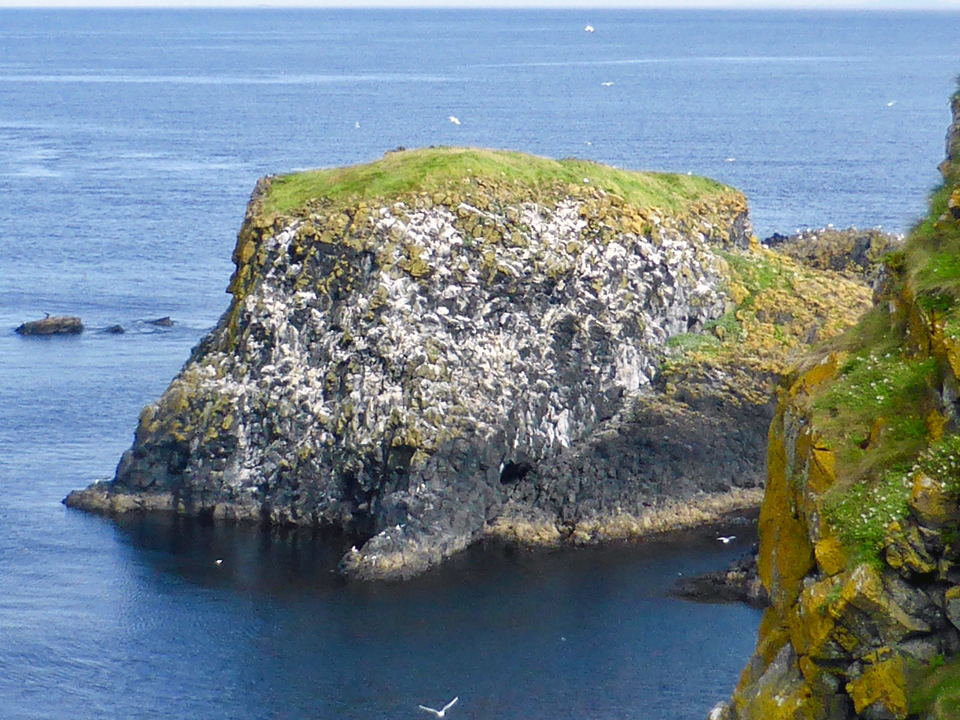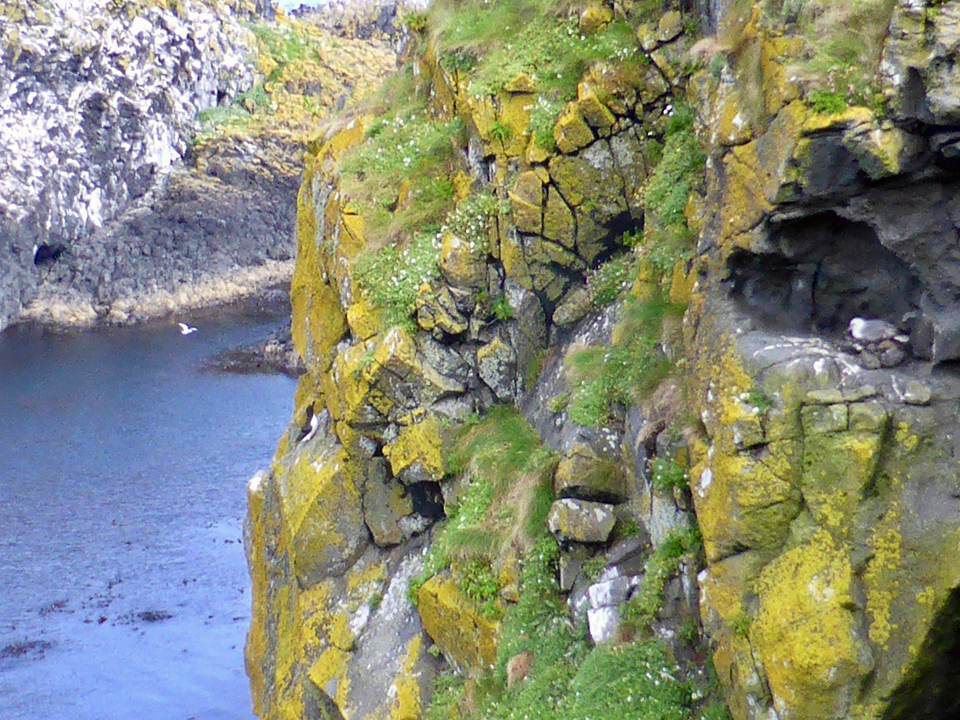Carrick-a-Rede: crossing the mouth of a 60 million year old volcano
Carrick-a-Rede rope bridge, near Ballintoy in County Antrim, Northern Ireland
The Carrick-a-Rede Bridge is one of the top attractions along Northern Ireland’s Coastal Causeway. The scenic and invigorating walk that leads to it and the island for which it is named runs past coastal farmlands, fields of flowers and grazing sheep.
Fishermen are known to have built a single hand rope bridge to the island to check their summertime salmon nets as far back as 1755 .
pathway to Carrick-A-Rede
Today’s bridge
The current bridge, though safer, is still an adventure. It crosses over the 60’ chasm formed by the mouth of a 60 million year old volcano. Waves rage 100′ beneath the bridge and break against the rocks. The stronger the wind the more the bridge swings and sways.
On a calm and sunny day the water on the west side of Carrick-A-Rede is a crystal clear blue. Seaweed grows in the east side, which is green, deeper and shadowy.
bird at Carrick-A-Rede
Bird sightings
May through July is best for bird sightings. Kittiwakes and guillemots crowd into the cliff’s ledges. Fulmars prefer higher sites, and razorbills find little nooks and crannies.
birds at Carrick-A-Rede
Farther out, you might spot cormorants, a basking shark, porpoises and dolphins, or grey seals on the rocks below Sheep Island. Puffins breed nearby.
Volcanic evidence
Back on the mainland a vertical black column cuts vertically through the white limestone cliffs. It is basalt, lava that cooled from an eruption 60 million years ago.




